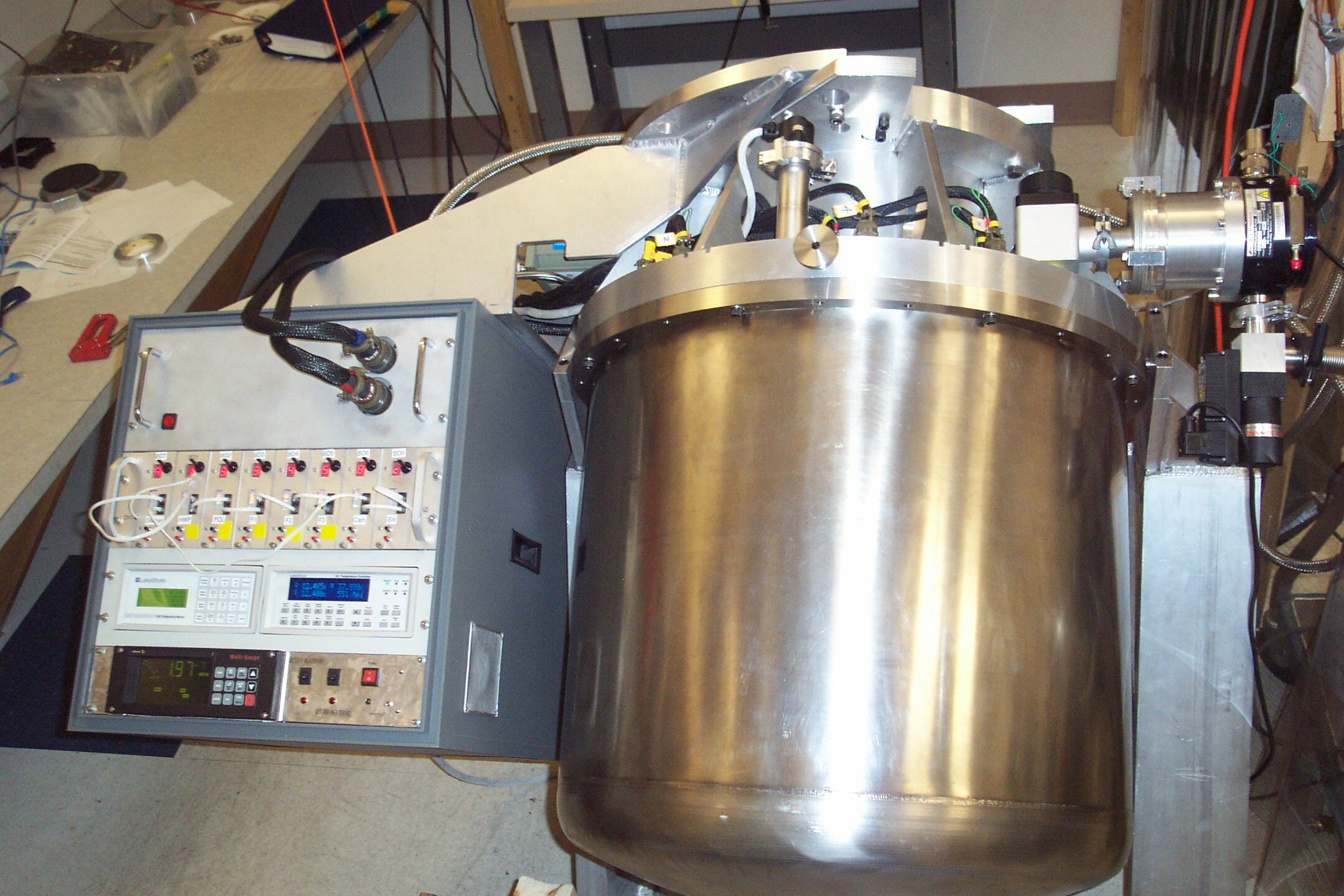Mimir - A Near-Infrared Wide-Field Imager, Spectrometer, and Polarimeter
|
|
Mimir is the name (not acronym) for a facility-class infrared instrument built at our IAR lab and at Lowell Observatory. Mimir saw first light on the 1.8 meter Perkins telescope outside Flagstaff, Arizona on August 19, 2004. It is now one of two facility-class instruments in regular use on Boston University's Perkins Telescope Observatory (PTO) outside Flagstaff, Arizona. Mimir is a multi-function instrument that covers a broad wavelength range and allows users to perform complex observations with a single instrument. The three main functions Mimir performs are imaging (much as a camera takes pictures), spectroscopy (decomposing infrared star light into its constituent colors), and polarimetry. (click here for the article describing Mimir in the December 2007 issue of PASP). Mimir’s wavelength coverage is from 1 to 5 micro-meters, or from about twice the wavelength of green light to about ten times that wavelength. This near-infrared light passes through the earth’s atmosphere only in a few bands of wavelengths (click here to see a plot). These bands are identified by letters, running from the shortest wavelength band, called J, through H, K, L, and M. Mimir is open for regular scheduling and use by certified PTO users. Mimir's schedule usage on the PTO for the current quarter may be found on the PTO web site . Eye Candy - Example Images and Spectra NEWS - (click links to see details)
|
 |
|
Mimir consists of a large vacuum cryostat that contains lenses, filters, motors, and a large format near-infrared array detector. The lenses take light from the Perkins telescope and focus it onto the detector array. The optics and the detector must operate at low temperatures, so Mimir is kept cool by a helium gas closed-cycle refrigeration system. All instrument adjustments are made within the cryostat using vacuum cryogenic stepper motors and gear systems. These are controlled by computers located in the warm control room. All control information and image data are conveyed via fiber optics between Mimir and its computers. |
|
Institute for Astrophysical Research, and the Perkins Telescope Observatory, Boston University This website subject to frequent change and updates. To contact webmaster, click here. 20240119 DPC |












